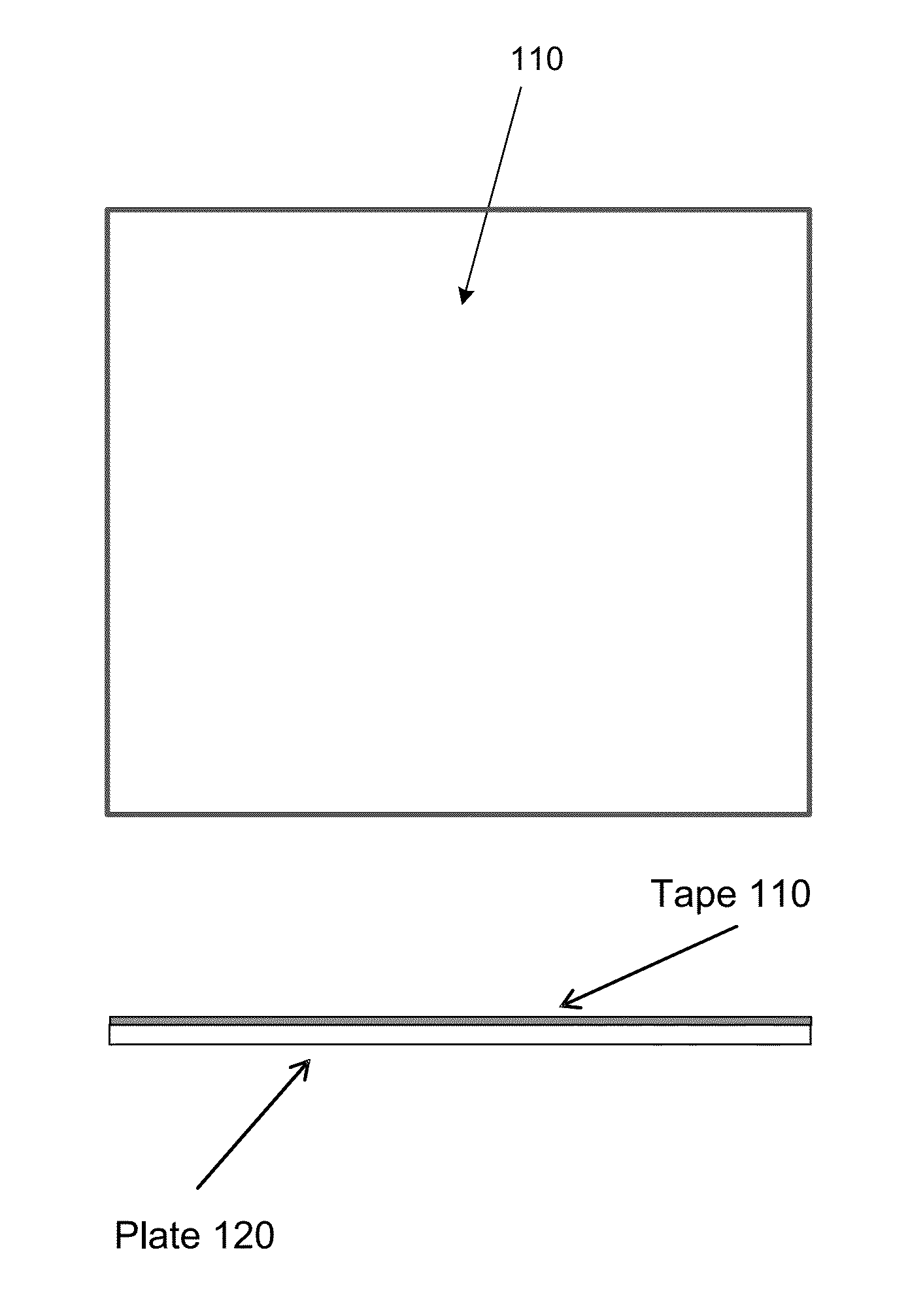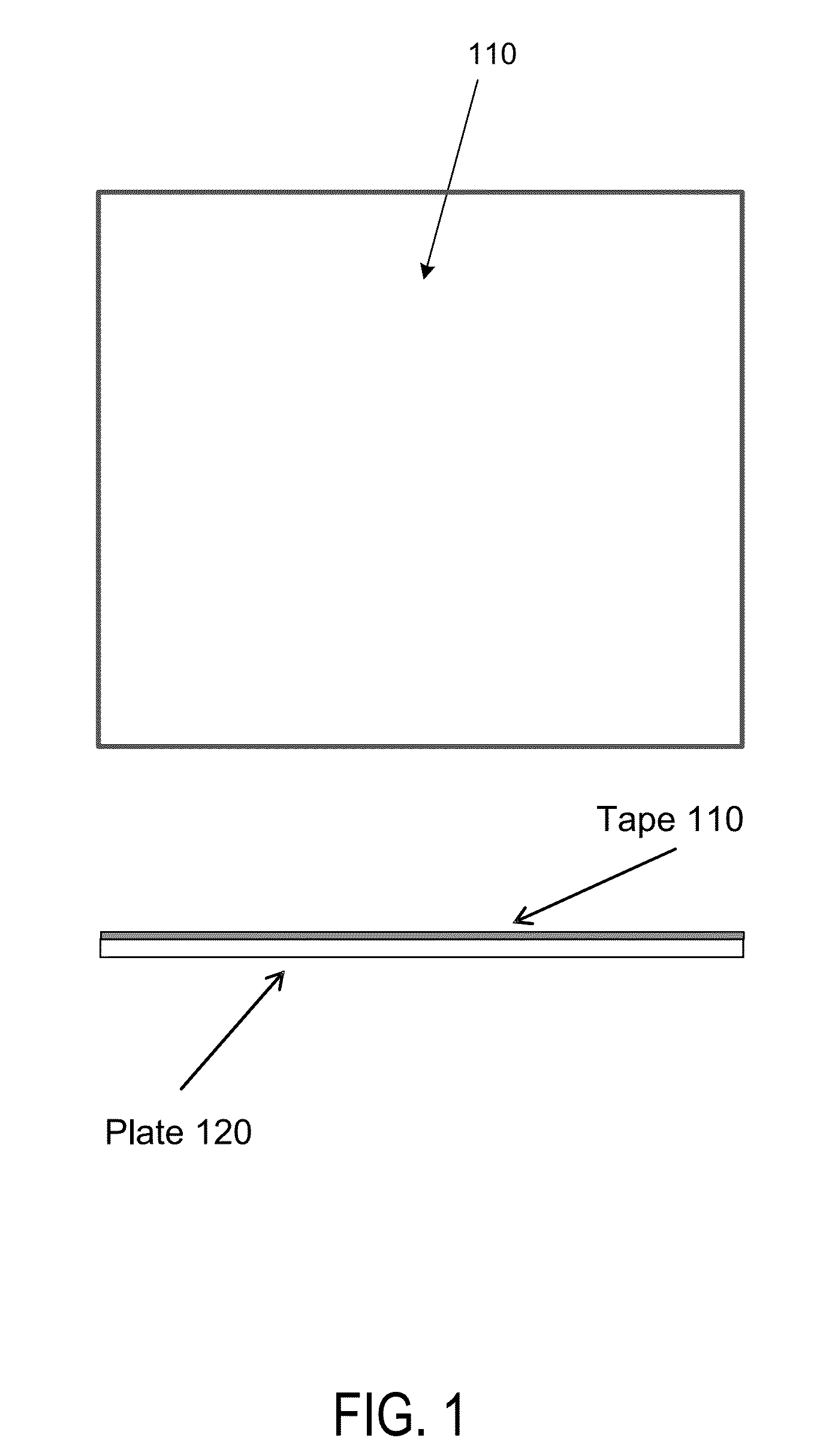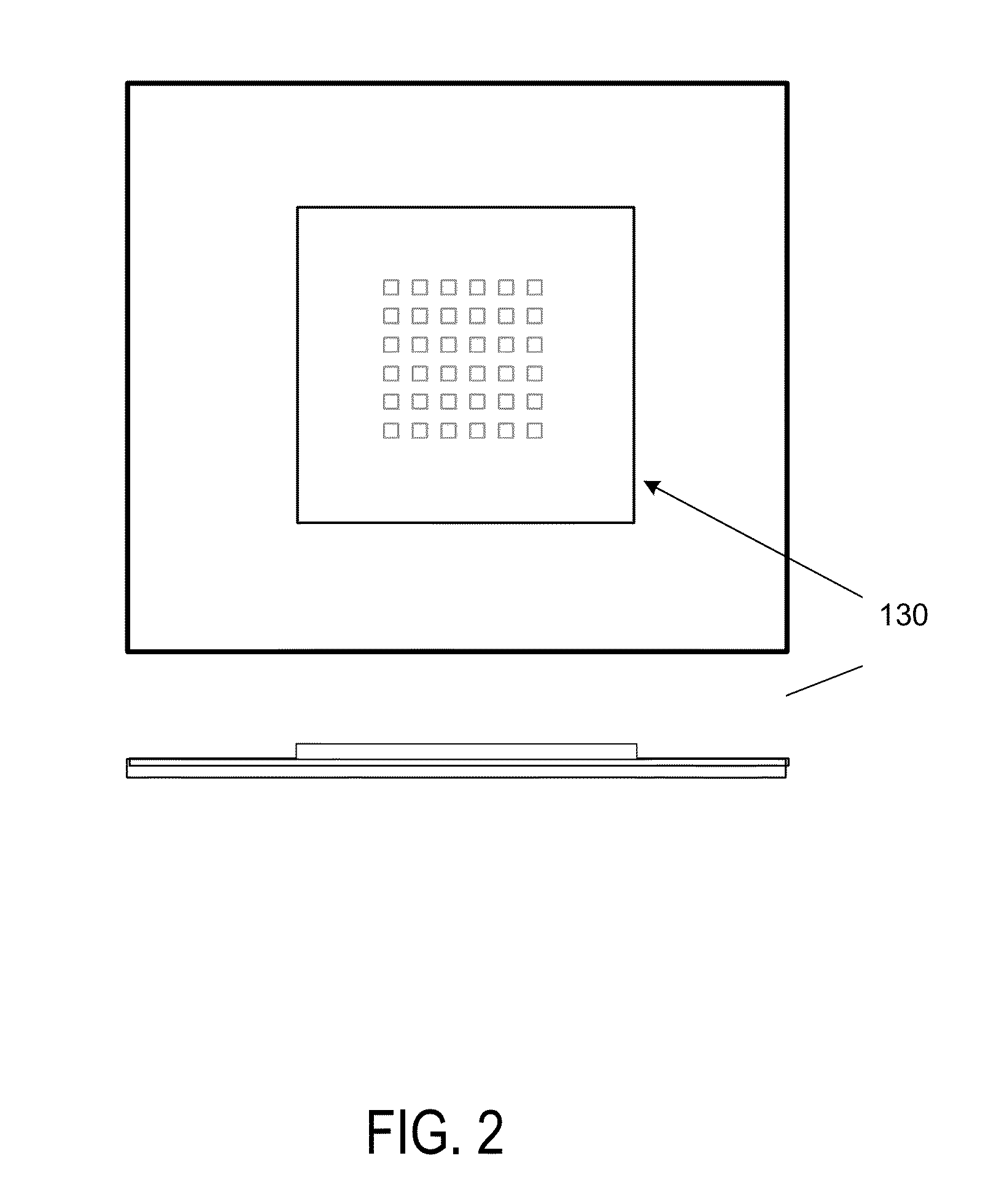Printing phosphor on LED wafer using dry film lithography
a technology of phosphor and film lithography, which is applied in the manufacture of semiconductor/solid-state devices, electrical equipment, semiconductor devices, etc., can solve problems such as color shifting
- Summary
- Abstract
- Description
- Claims
- Application Information
AI Technical Summary
Benefits of technology
Problems solved by technology
Method used
Image
Examples
Embodiment Construction
[0030]The description below will be made with reference to a series of drawing figures enumerated above. These diagrams are merely examples, and should not unduly limit the scope of the claims herein. In connection with the various aspects illustrated and described, one of ordinary skill in the art would recognize other variations, modifications, and alternatives.
[0031]FIG. 1 shows a top view and a cross-sectional view of a substrate for carrying out the method for phosphor deposition. An adhesive tape 110 is disposed on a glass plate 120. In an embodiment, the tape is a double-sided adhesive tape, which can be a thermal release or a UV release tape made of, e.g., polyester. For example, a commercially available tape from Semiconductor Equipment Corp. can be used. Tape 110 is attached to plate 120 the glass substrate. In a specific embodiment, plate 120 is about 1 mm thick. But plates having other suitable thicknesses can also be used.
[0032]In FIG. 2, a grid template 130 is disposed...
PUM
 Login to View More
Login to View More Abstract
Description
Claims
Application Information
 Login to View More
Login to View More - R&D
- Intellectual Property
- Life Sciences
- Materials
- Tech Scout
- Unparalleled Data Quality
- Higher Quality Content
- 60% Fewer Hallucinations
Browse by: Latest US Patents, China's latest patents, Technical Efficacy Thesaurus, Application Domain, Technology Topic, Popular Technical Reports.
© 2025 PatSnap. All rights reserved.Legal|Privacy policy|Modern Slavery Act Transparency Statement|Sitemap|About US| Contact US: help@patsnap.com



